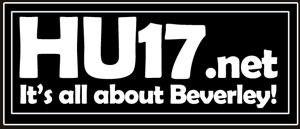
So long as there are people that need education, the world will always need teachers. The classrooms may change but teaching is a necessary skill that we will all need at some point in our lives.
It starts in our infant years and many of us do not leave full-time education until we are fully grown, adults.
Many of us even return to education later on in life to gain new skills and qualifications. If you do return to the education process after some time, you may notice that some teaching methods have changed.
This is because the education process has to change as new research takes place and technology advances. With that being said, here are some of the different types of teaching in the 21st century.
Interaction
Most of you will probably imagine a classroom full of raised hands when you think about the teaching process. While there was a time when teaching was considered to be more effective when the teacher would use a question-and-response technique, modern classrooms rely on a more interactive teaching method.
Interactive learning can take several different forms in the classroom. Some teachers choose to arrange interactive learning activities like class debates or role-play to demonstrate how the educational materials can be used practically. Also, these teaching styles get students to think about the things they have learned in more depth rather than relying on simple memorization and recall.
Online Learning
The biggest example of how technology has impacted the educational system is that it is now entirely possible to learn in a remote location using online materials. With video chat software, teachers can now address entire classes of people across the web, and it does not matter whether the students live in close proximity to each other. Also, screen-sharing software allows teachers to share learning materials during the lesson, or they can post additional materials on the learning platform whenever they feel it necessary. Students are also more likely to receive these notifications and remember them, thanks to the alerts on their smartphones.
Clearly, the biggest advantage of online teaching is convenience. For example, students on an online TEFL course from Premier TEFL can use the service to learn in their own time. The education method and teaching styles can be kept the same, the only difference with online teaching is that you can reach a much larger and more diverse student base.
Flipped Classroom
The flipped classroom approach is another interactive teaching method that largely relies on student participation and presentation skills. During a flipped classroom scenario, the teacher gives a student an area of study. This student must then learn about this topic and teach the class about it in the same way that a teacher would. The flipped classroom approach is a teaching method that aims to teach its participants about:
- Time management
- Research skills
- Presentation skills
- Expressing different viewpoints
Of course, the flipped classroom only works if your students actually take it upon themselves to engage and understand new learning materials on their own. how you choose to grade this earning approach can also differ. You can grade each student on their research and presentation or have the rest of the class take notes and learn from the other students. The choice is down to the teacher.
VAK Learning
VAK teaching considers the fact that every student learns in a different way. For example, a student may respond better to and recall visual information better than audio information. That is why VAK learning splits students into different visual, audio, and kinaesthetic groups to present information using these techniques.
As you already know, visual learners respond better to visual stimuli, audio learners respond better to sound, and kinaesthetic learners can absorb new information better through movement exercises. Deciding which students fit into each category requires additional testing and research, and teaching each group equally requires more manpower in the classroom. However, VAK teaching ensures that everyone in the classroom learns at the same speed with the materials they respond to best.
Game-Based Learning
The core principles of game-based learning are similar to VAK learning. Instead of splitting the class into three groups, however, game-based learning aims to teach children using materials they are more likely to respond to.
This means that educational materials are set up and distributed via board games, card games, or video games. As a result, the students absorb new information or solve problems in a medium they can interpret as fun. In other words, these students learn without realizing that they are doing so with the game-based teaching method.
Conclusion
Teaching has always used a carefully researched set of principles and skills. While teaching methods may change over time, you can ensure that students are still receiving the best learning materials possible in the 21st century.












